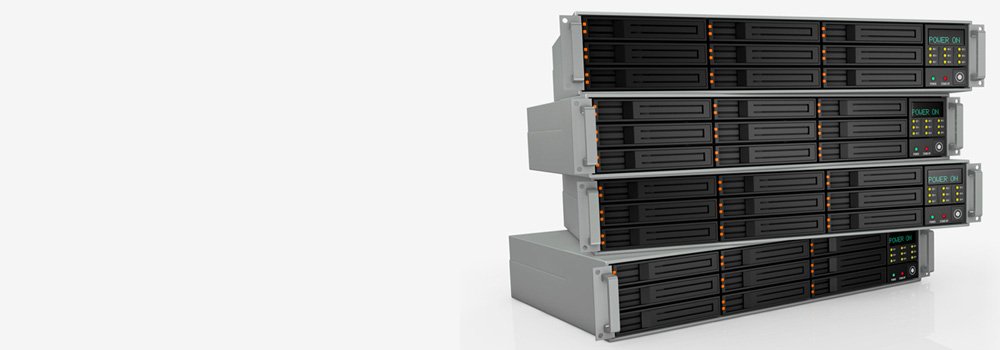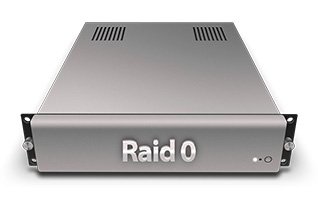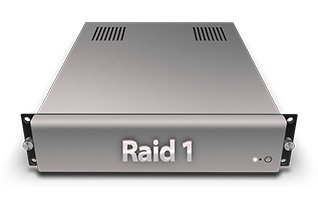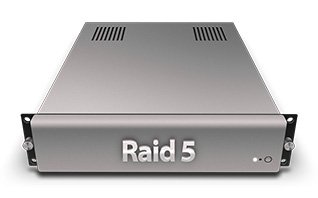RAID 0 Data Recovery
We specialise in RAID-0 (striped) data recovery across home, SME and enterprise environments—2-disk stripes through 32-disk high-throughput sets—on workstations, servers, DAS, and NAS (software and hardware RAIDs). We regularly handle escalations from large companies and public-sector teams.
Send-in instructions: label each disk with its original bay/slot order, place drives in anti-static bags, cushion them in a padded envelope or small box, include your contact details, and post or drop them in. We always clone members first, working read-only on the originals.
UK NAS brands we commonly see (with representative popular models)
-
Synology – DS224+, DS423+, DS723+, DS923+, DS1522+; RS1221+, RS3621xs+
-
QNAP – TS-464, TS-473A, TS-873A, TVS-h674; rack TS-x53DU/x73AU
-
Western Digital (WD) – My Cloud EX2 Ultra, EX4100, PR4100
-
Seagate / LaCie – LaCie 2big/6big/12big, Seagate IronWolf NAS enclosures
-
Buffalo – TeraStation 3420/5420/6420; LinkStation 220/520
-
NETGEAR – ReadyNAS RN424, RN524X, RN628X
-
TerraMaster – F2-423, F4-423, F5-422; U-series racks
-
ASUSTOR – AS5304T, AS6604T, LOCKERSTOR 4/8
-
Drobo (legacy) – 5N2, B810n
-
Thecus – N5810PRO, N7710-G
-
iXsystems – TrueNAS Mini X/XL, R-series
-
LenovoEMC (legacy) – ix2/ix4, px4
-
Zyxel – NAS542, NAS326
-
D-Link – DNS-320L, DNS-340L
-
Promise – VTrak/Vess
-
Ugreen – consumer NAS ranges
-
OWC – Jellyfish Mobile/Studio
-
QSAN – XN3002T, XN5004T
-
Infortrend – EonNAS
-
HPE StoreEasy – 1460/1660/1860
We recover from single/dual/quad-bay and rack models used with RAID-0 or “JBOD/stripe” modes.
Rack/workstation platforms often configured for RAID-0 (representative)
-
Dell EMC PowerEdge – R540/R640/R650/R750; T440/T640
-
HPE ProLiant – DL360/DL380 Gen10/11; ML350
-
Lenovo ThinkSystem – SR630/SR650; ST550
-
Supermicro SuperServer – 1029/2029/AS-series
-
Fujitsu PRIMERGY – RX2540; TX2550
-
Cisco UCS C-Series – C220/C240
-
Dell Precision workstations – 5820/7820/7920 with HBA/RAID-0 scratch sets
-
HP Z-Series workstations – Z4/Z6/Z8
-
Lenovo ThinkStation – P520/P720/P920
-
OVH/Hetzner-style bare-metal with LSI/Avago HBAs (common in hosted RAID-0)
-
Areca controller builds – ARC-1883/1886 series
-
Adaptec by Microchip – ASR-71605/71685/8405
-
Promise VTrak DAS sets
-
Infortrend EonStor GS/GX (DAS mode)
-
HighPoint NVMe/RAID accelerators (workstations)
What makes RAID-0 different (and hard)
RAID-0 provides performance through striping and zero redundancy. Recovery requires reconstructing exact geometry—member order, stripe unit size, start offset, parity (n/a), sector size (512e/4Kn)—then building a virtual array from clones before any filesystem repair. Any write to originals risks irrecoverable loss.
Our RAID-0 recovery workflow (what we actually do)
-
Forensic intake & mapping – record serials, bays, controller metadata, SMART; originals are write-blocked.
-
Clone every member first – hardware imagers (PC-3000/Atola/DDI) with unstable-media profiles: head-select, zone priority, reverse passes, adaptive timeouts.
-
Geometry discovery – infer disk order, stripe size, and offsets using parity-less cross-correlation, entropy dips at file headers (NTFS $MFT, APFS container headers, superblocks), and dynamic programming over candidate permutations.
-
Virtual assembly – build a read-only virtual RAID-0 atop the clones, normalising 512e/4Kn differences and trimming to the smallest common extent.
-
Filesystem/LUN repair – NTFS/ReFS, APFS/HFS+, EXT/XFS/ZFS/Btrfs: journal/intent replay, B-tree & bitmap repair, orphan grafting; no writes to members.
-
Verification & export – SHA-256 manifests, sample open tests (DB/video/mail), then secure delivery.
Top 75 RAID-0 errors we recover (and how we fix them)
Geometry & configuration
-
Unknown disk order → correlation of adjacent stripe tails/heads; validate against FS signatures.
-
Unknown stripe unit size → test 16–1024 KB; pick candidate with highest header alignment consistency.
-
Unknown start offset → detect superblocks/GPT at expected LBAs; adjust per-member offsets.
-
Mixed sector sizes (512e/4Kn) → translate LBAs during virtual build; align to logical sector.
-
Member added/removed without note → scan for stale stripe fragments; exclude alien members.
-
Controller migrated (metadata lost) → reconstruct via content analysis; ignore fresh empty headers.
-
Accidental quick-init → deep scan members; rebuild prior layout from remnants.
-
Accidental “create single disk” on a member → strip new partitioning; use underlying old data.
-
Disk reorder during service → infer from repeating pattern breaks; test permutations on small windows.
-
Misreported capacity after firmware update → trim to common size; re-align stripes.
Member/media failures (HDD/SSD/NVMe)
-
Head crash on one member → donor HSA; per-head imaging; accept holes; reconstruct from surviving members (no parity: expect partials).
-
Translator corruption (HDD) → rebuild translator from P/G-lists; image; fill virtual set with available ranges.
-
Spindle seizure → spindle swap/platter migration; image good zones.
-
Stiction → controlled release; immediate short-timeout clone.
-
Bad sector storms → reverse reads, small blocks, cool-down cycles; mark hole map.
-
Pre-amp short → HSA swap; bias test; image.
-
SSD controller lock → SAFE/ROM mode; extract FTL (L2P) map; clone namespace.
-
NAND wear/ECC maxed → majority-vote multi-reads; channel isolation; accept partial holes.
-
Power-loss metadata loss (SSD) → rebuild FTL/journals; if absent, chip-level dumps & reassembly (ECC/XOR/interleave).
-
NVMe namespace missing → admin cmds to enumerate; clone each namespace.
Enclosure, HBA & cabling issues
-
SATA/SAS CRC errors → replace path/backplane; re-image.
-
Expander link flaps → re-map enclosure; stabilise lanes; clone.
-
USB/UASP DAS resets → fall back to BOT; bench PSU; image.
-
Thunderbolt enclosure drops → limit link speed; firmware update; image.
-
Bridge-board failure → bypass to native SATA/NVMe; image from drive.
Controller/HBA behaviour
-
Write cache lost (BBU failure) → incoherent stripes; choose version using FS journals.
-
Driver bug (RST/fakeraid) → ignore driver view; ingest member metadata; assemble manually.
-
Foreign import wrote new headers → discard newest generation; select last consistent epoch.
-
Stripe size changed mid-life → segment by epoch; export from consistent spans.
-
Controller “initialised” after error → recover from deeper scan; ignore zeroed fronts when possible.
Filesystems on top of RAID-0
-
NTFS $MFT/$MFTMirr divergence → reconcile records; replay $LogFile; rebuild $Bitmap.
-
ReFS CoW inconsistency → roll back to consistent epoch via shadow copies.
-
APFS object map damage → rebuild OMAP/spacemaps; export snapshots.
-
HFS+ catalog/extent B-tree corrupt → rebuild trees; graft orphans.
-
EXT superblock/journal damage → use backup superblocks; fsck with replay; copy out.
-
XFS log corruption → xfs_repair (logzero when indicated); salvage trees.
-
ZFS on stripe (rare) → import readonly;
zdbmap; copy files. -
Btrfs on stripe → btrfs-restore from consistent chunks.
Partition maps & boot metadata
-
GPT header overwritten → rebuild from secondary GPT & FS signatures.
-
Hybrid MBR/GPT mismatch (Boot Camp) → normalise to GPT; align LBA ranges.
-
Protective MBR only → recover GPT from secondary; mount LUN.
Administrative / human errors
-
Disk pulled live & reinserted elsewhere → identify epoch divergence; select coherent set.
-
Windows “initialize” clicked → ignore new label; recover old partitioning.
-
Linux mdadm created over old data → read superblocks; assemble prior array virtually.
-
NAS “factory reset” without wipe → scrape prior md/LVM metadata; rebuild.
-
DSM/QTS migration wrote new md layers → select last consistent md set; discard new.
-
Expanding capacity then abort → find pre-expand map; export from the stable region.
Performance/IO anomalies with data impact
-
Thermal throttling (NVMe stripe) → active cooling; reduced QD; staged imaging.
-
Voltage droop under load → bench PSU; stabilise rails; clone.
-
Frequent OS-level retries → avoid OS copy; hardware imager with strict timeouts.
Application/data-layer problems on RAID-0
-
VMFS datastore header damage → rebuild VMFS; stitch VMDKs.
-
Broken VMDK descriptor + intact flat → regenerate descriptor; mount VM.
-
Hyper-V AVHDX chain broken → fix parent IDs; merge diffs on image.
-
Large MOV/MP4 indexes lost → rebuild moov/mdat; GOP re-index.
-
PST/OST oversized/corrupt → low-level fix; export to new store.
-
SQL/SQLite with good WAL → salvage via WAL replay on clone.
Edge cases & legacy
-
Dynamic Disks (Windows) striped set → rebuild LDM metadata; rejoin extents.
-
Apple Software RAID-0 → parse Apple RAID headers; assemble virtually.
-
Old Promise/HighPoint meta → parse proprietary headers; reconstruct.
-
Mixed 4K/512e drives → normalise sector size in virtual build.
-
Counterfeit drive in stripe → map real capacity; handle wrap-around loss.
When rebuilds were (wrongly) attempted on RAID-0
-
“Rebuild” attempted (not applicable to RAID-0) → controller wrote parity/metadata garbage; roll back via earlier epoch content.
-
Attempted convert to RAID-1 mid-failure → discard partial mirror writes; recover from pre-convert span.
-
Software clone over a member → use surviving members + pre-failure backups; carve where possible.
-
Disk-to-disk copy with wrong alignment → detect misalignment; realign in virtual set.
NAS-specific stacks using RAID-0
-
Synology mdadm/LVM on stripe → reconstruct md arrays; reassemble LVM; mount ext4/btrfs.
-
QNAP similar stack → same approach; legacy ext3/4 support.
-
XFS on NAS stripe → xfs_repair on the LUN clone; export.
Physical/environmental damage
-
Drop shock to one member → mechanical path; partial hole map accepted.
-
Water ingress → controlled dry; corrosion mitigation; clone; virtual assemble.
-
Fire/heat damage → inspect packages; ECC-heavy imaging/dumps; partials.
Security/encryption on top of RAID-0
-
BitLocker over stripe → recovery key required; decrypt LUN image; repair FS.
-
FileVault/LUKS over stripe → require passphrase/key; decrypt on clone; rebuild FS.
-
SED/HW-encrypted NAS volume → need keys/PIN; otherwise carve plaintext remnants only.
-
Ransomware on stripe → pursue snapshots/versions/backups; carve unencrypted residues; test known decryptors off-line.
Why choose Sheffield Data Recovery
-
25+ years of RAID engineering, from small 2-disk stripes to 32-disk high-throughput arrays
-
Clone-first, read-only process; advanced imagers and donor inventory for HDD/SSD/NVMe members
-
Deep stack expertise: controllers/HBAs, filesystems, hypervisors, NAS layers
-
Evidence-based reporting: SHA-256 manifests, sample-open verification
-
Free diagnostics with clear recovery options before work begins
Contact our Sheffield RAID engineers today for a free diagnostic. Package the drives safely (anti-static + padded envelope/small box, labelled by slot/order) and post or drop them in—we’ll take it from there.





